Owls in Vermont: When and Where to Find Them
Vermont is one of the few states in the US where the forest areas are still intact. It comes as no surprise that Vermont has a thriving wildlife. So, a lot of different kinds of Owl species can be spotted in this state.
According to the International Ornithological Committee, there are 254 owl species in the world. Of them, 9 can be found in Vermont. In this article, we’ll go through how you can spot owls in Vermont, where, and when. So, let’s get started!
Owl Species You Can Find in Vermont
The Owl species listed in the following can be found in Vermont. These are:
- Great Horned Owl
- Barn Owl
- Eastern Screech Owl
- Northern Saw-Whet Owl
- Barred Owl
- Short-Eared Owl
- Long-Eared Owl
- Snowy Owl
- Great Gray Owl
Let’s take a detailed look at these species.
| Name | Length | Weight | Wingspan | Scientific Name | Chances of Spotting One in Vermont |
| Great Horned Owl | 18.1-24.8 inches | 32.1-88.2 oz | 39.8-57.1 inches | Bubo virginianus | High |
| Barn Owl | 12.6-15.8 inches | 14.1-24.7 oz | 39.4-49.2 inches | Tyto furcata | High |
| Eastern Screech Owl | 6.3-9.8 inches | 4.3-8.6 oz | 18.9-24 inches | Megascops asio | Low |
| Northern Saw-Whet Owl | 7.1-8.3 inches | 2.3-5.3 oz | 16.5-18.9 inches | Aegolius acadicus | Moderate |
| Barred Owl | 16.9-19.7 inches | 16.6-37 oz | 39-43.3 inches | Strix Varia | High |
| Short-Eared Owl | 13.4-16.9 inches | 7.3-16.8 oz | 33.5-40.5 inches | Asio flammeus | Low |
| Long-Eared Owl | 13.8-15.8 inches | 7.8-15.3 oz | 35.4-39.4 inches | Asio otus | Moderate |
| Snowy Owl | 20.5-27.9 inches | 56.4-104.1 oz | 49.5-57.1 inches | Bubo scandiacus | Low |
| Great Gray Owl | 24-33.1 inches | 24.7-60 oz | 53.9-60.2 inches | Strix nebulosa | Low |
1. Great Horned Owl
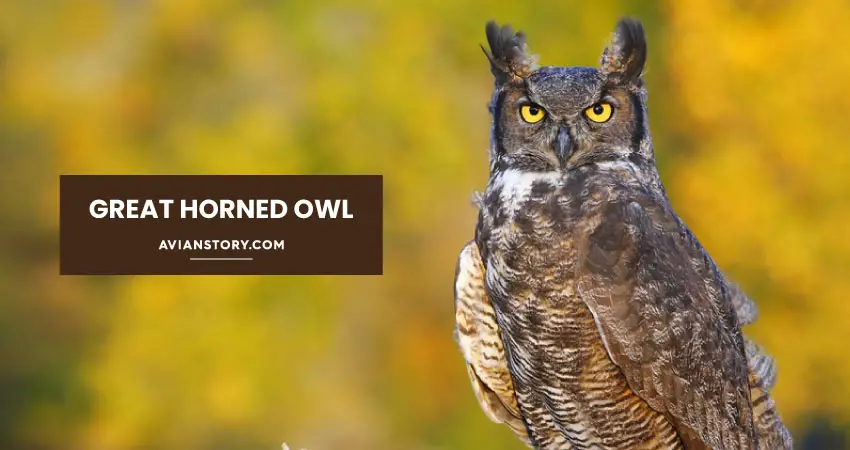
- Length: 18.1-24.8 inches
- Weight: 32.1-88.2 oz
- Wingspan: 39.8-57.1 inches
Commonly Found In
These are one of the most commonly found Owls in the US. You can find them in every state of the US throughout the year. Due to the suitable forest areas of Vermont, these owls thrive in this state.
Behavior or Characteristics
Great Horned Owls are often used in illustrations, pop culture, and children’s cartoons because of their quintessential look. These owls are large, and they’re one of the fiercest owls.
The easiest way of identifying these owls would be to look at their size first. If the owl looks larger than usual, then chances are it’s a Great Horned Owl. To further clarify, look for ear-like tufts of feathers on its head.
If you want to check if it’s a male or female, the easiest way would be to listen to its hoot. Both species hoot, but the males tend to do so at a lower and deeper frequency.
Fun Fact or Interesting Fact
- Their sense of smell is super weak, and they can even eat a skunk!
- Usually feed on larger animals due to their massive size.
2. Barn Owl
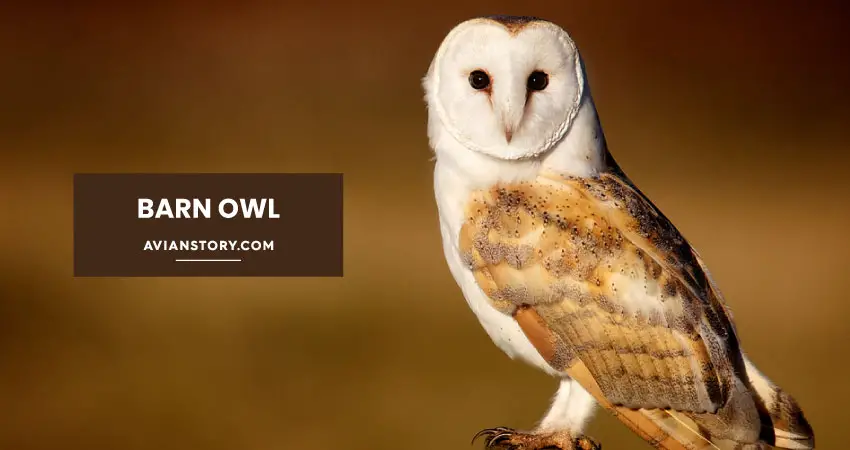
- Length: 12.6-15.8 inches
- Weight: 14.1-24.7 oz
- Wingspan: 39.4-49.2 inches
Commonly Found In
These are non-migratory owls that can be found in most states of the US except a handful. As they’re non-migratory, they can be found throughout the year as well. You can easily find them in Vermont.
Behavior or Characteristics
Barn Owls are very popular due to their monkey-like face. They have a heart-shaped face that’s white and usually have a white belly with a brown crown, wings, and tail.
These tend to have one of the best hearing senses. They’re so good that they can pinpoint the locations of small animals, such as mice that are hiding in bushes even.
They’re commonly known as Barn Owls as they tend to nest in barns. Farmers prefer keeping them around as they keep their property free of rodents. These owls don’t hoot. Rather, they screech, and their screeching sounds a lot like a red-tailed hawk.
Fun Fact or Interesting Fact
- They got their name because they prefer living in abandoned barns or similar infrastructures.
- They screech instead of hooting.
- They’re called ghost owls, monkey-faced owls, etc., due to their unique appearance.
3. Eastern Screech Owl
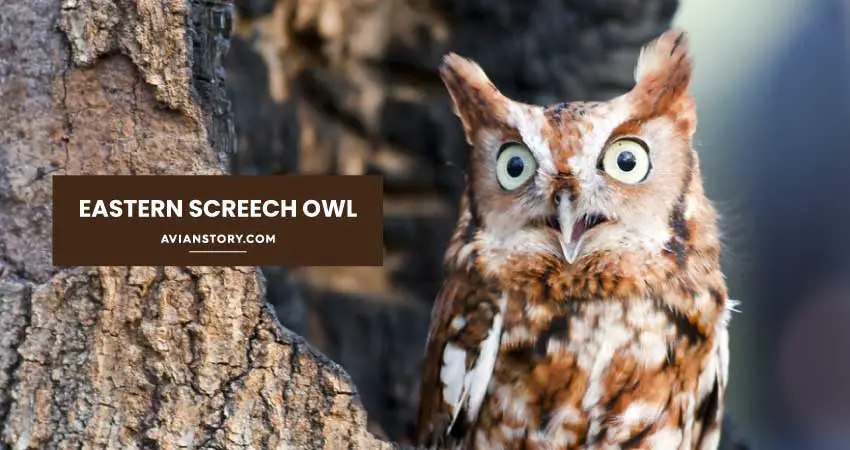
- Length: 6.3-9.8 inches
- Weight: 4.3-8.6 oz
- Wingspan: 18.9-24 inches
Commonly Found In
Eastern Screech owls are found throughout the eastern states of the US, hence their name. They’re found in Vermont throughout the year but are rare to spot due to their unique characteristics.
Behavior or Characteristics
Like Great Horned Owls, they have ear tufts at the side of their heads. However, these are fake because their ears are actually on the sides of their heads and not on top.
While these tufts are fake, they help them in multiple ways. Firstly, they can be used to communicate. Secondly, it’s used for camouflage.
Speaking of camouflage, this is the most unique characteristic of Eastern Screech Owls. They have a combination of grey feathers that give them a unique pattern and make them look like a tree. While this makes it easy to identify them, it also makes them tough to spot.
Fun Fact or Interesting Fact
- They are known to bring other animals into their nests to get rid of insects
- Their eyes are not round
4. Northern Saw-Whet Owl

- Length: 7.1-8.3 inches
- Weight: 2.3-5.3 oz
- Wingspan: 16.5-18.9 inches
Commonly Found In
Northern Saw-Whet Owls are commonly found in Vermont, but they aren’t as common as some other species. These are migratory birds, and they prefer living in forests with nearby rivers. They are found in northern states of the US throughout the year, but they move to the southern states in winter.
Behavior or Characteristics
Northern Saw-Whet Owls got their name from their unique calling sound. They sound like a saw being sharpened when they’re alarmed. However, they’re capable of making other types of unique sounds as well. One of them is their mating call, which is a “too-too-too” sung twice at a time.
These are one of the smallest owls that you can come across. Due to their size, they prefer nesting in abandoned woodpecker holes. Female Saw-Whet owls tend to mate with multiple males, so they give birth to a lot of offspring each season.
The females leave when the chicks grow feathers, and the male owl takes care of their upbringing.
Fun Fact or Interesting Fact
- Their numbers are decreasing as the number of mature trees is decreasing, thus limiting their nesting opportunities.
- The females mate with multiple males and leave as soon as their offspring sprouts feathers.
- The male owls take care of their kids.
5. Barred Owl

- Length: 16.9-19.7 inches
- Weight: 16.6-37 oz
- Wingspan: 39-43.3 inches
Commonly Found In
The Barred-owl is found in Vermont throughout the year as these are non-migratory. They aren’t found throughout the US, but they’re seen in most of the eastern states.
Behavior or Characteristics
They are nocturnal owls who get their names from the light and dark brown stripes on their backs and wings. Although they’re mostly active at night, they’re found to call in the morning as well.
Barred Owls are one of the easiest to spot because they sparingly feel threatened by humans. In fact, they’re very inquisitive and will follow you out of curiosity.
They’re rather large compared to most other owl species and usually stay at the top of the food chain. The only species that may threaten them are the Great Horned Owls. Their favorite meals consist of meat, and they feed on frogs, snakes, fish, turtles, smaller birds, and even insects.
Fun Fact or Interesting Fact
- Despite being nocturnal, they tend to hoot during the day too.
- They usually don’t fly off due to their inquisitive nature.
- Usually are easy to spot as they are territorial.
6. Short-Eared Owl
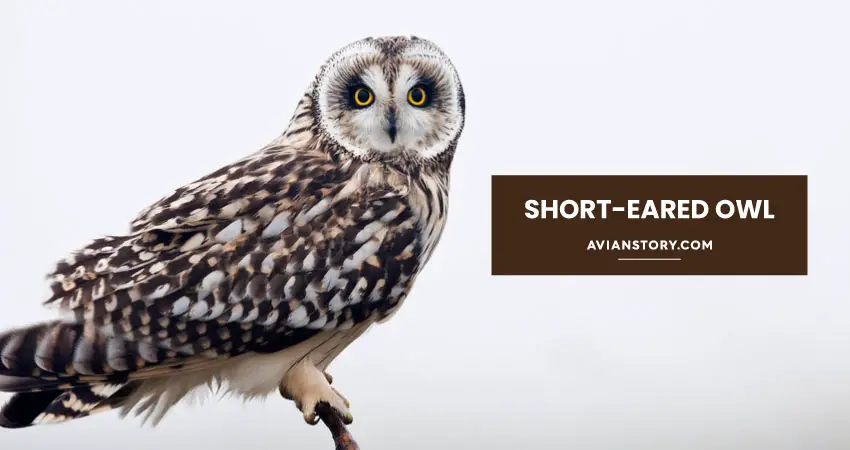
- Length: 13.4-16.9 inches
- Weight: 7.3-16.8 oz
- Wingspan: 33.5-40.5 inches
Commonly Found In
These owls are found in the Northern US throughout the year. However, they tend to move towards Canada during the summer, while they prefer the warmer southern states in the summer. In Vermont, there’s a higher chance of spotting them in the northern regions.
Behavior or Characteristics
These owls evidently got their name from the short ear tufts of theirs. Their ear tufts are so small that they’re tough to see. This is one of the characteristics that may help you identify them. As for their feathers, they have brown feathers, but there are buff spots.
These owls mainly live on small rodents such as mice and voles. They also feed on squirrels. Short-Eared owls prefer open grasslands for nesting. In their mating season, they remain especially active during the days as their courting takes place in daylight. However, they remain active in both day and night throughout the year.
Fun Fact or Interesting Fact
- They nest on the ground
- They’re one of the two owl species that live on the Hawaiian Islands naturally.
- These owls easily avoid detection – thanks to their unique feather patterns.
7. Long-Eared Owl
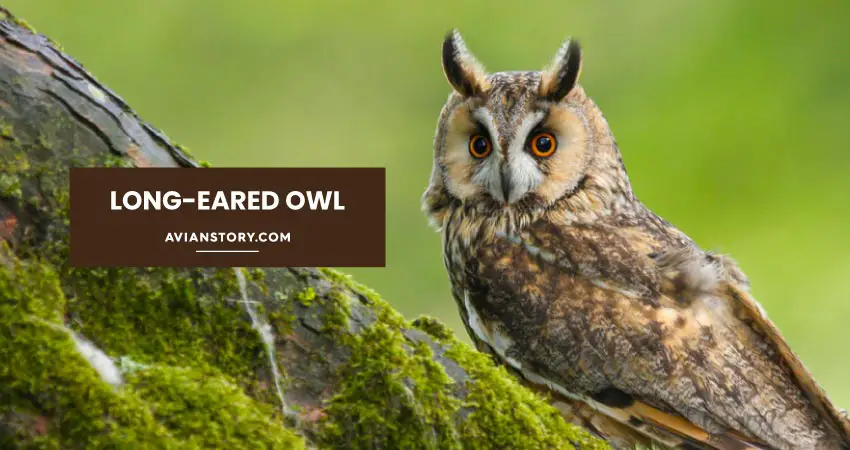
- Length: 13.8-15.8 inches
- Weight: 7.8-15.3 oz
- Wingspan: 35.4-39.4 inches
Commonly Found In
Long-eared owls are migratory birds, and they can’t be found in Vermont throughout the year. They can be found in some northern western states of the US throughout the year. In other states like Vermont, they can be found throughout the winter only.
Behavior or Characteristics
While these can’t be found in Vermont throughout the year, the chances of spotting them aren’t completely slim as they are one of the most social owls. They tend to live in groups and clusters and, thus, are easier to spot.
In fact, there have been records of Long-Eared Owls living in colonies of hundreds! However, they’re tougher to detect when they’re alone. Due to the woody color of their feathers, they tend to blend into forest-type areas. In such areas, the easiest way to spot them is to listen to their calls.
They call out more frequently in their mating seasons. The easiest way to identify them is to look for their long tufts.
Fun Fact or Interesting Fact
- They prefer moving in clusters that can have even hundreds of Long-Eared owls
- The lifespan of long-eared owls is much shorter than other species discussed in this article
8. Snowy Owl
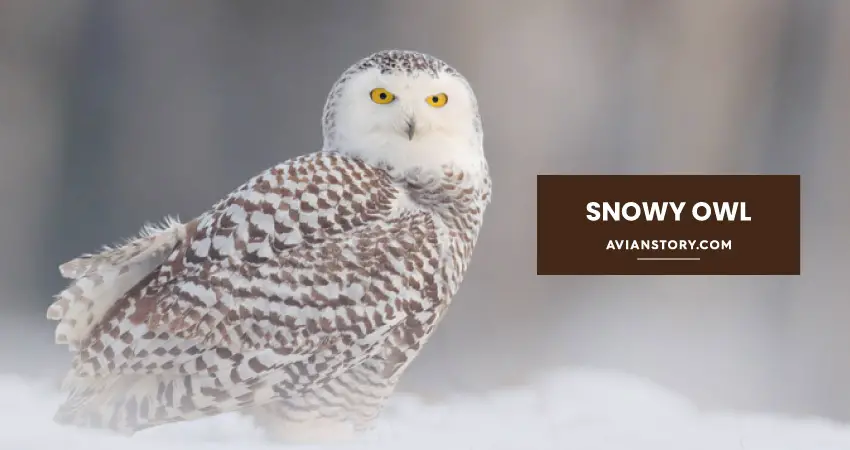
- Length: 20.5-27.9 inches
- Weight: 56.4-104.1 oz
- Wingspan: 49.5-57.1 inches
Commonly Found In
Snowy owls are one of the most beautiful species of owl that you can find. If you manage to spot them, consider yourself lucky. Unfortunately, they are rarely seen in Vermont.
They usually live in the tundra of Northern Canada. In the winter, they tend to migrate south, but there’s no telling how south they’ll come.
They are known to come as far as the northern borders of the US. So, you can see them only in the winter, and you’ll have to be lucky to spot one of them.
Behavior or Characteristics
They get their name due to their snowy look. These owls have snow-white feathers, and their feathers get whiter the older they get. Their white feathers aren’t for beauty only, but it serves the crucial purpose of camouflaging them as they live in the tundra for the most part.
These owls are rather gentle, and they aren’t that aggressive in terms of hunting. They feed mostly on fish and rodents. Sometimes, they feed on smaller birds too.
However, they’re very aggressive in terms of territory defending. They don’t hesitate before attacking large predators such as bears should they enter their territory.
While they’re tougher to detect in the tundra, they become easy to detect in Vermont as they can’t blend in the forest area.
Fun Fact or Interesting Fact
- Their feathers are white as snow, and they get whiter the more they age
- They have the guts to attack even large predators
9. Great Gray Owl
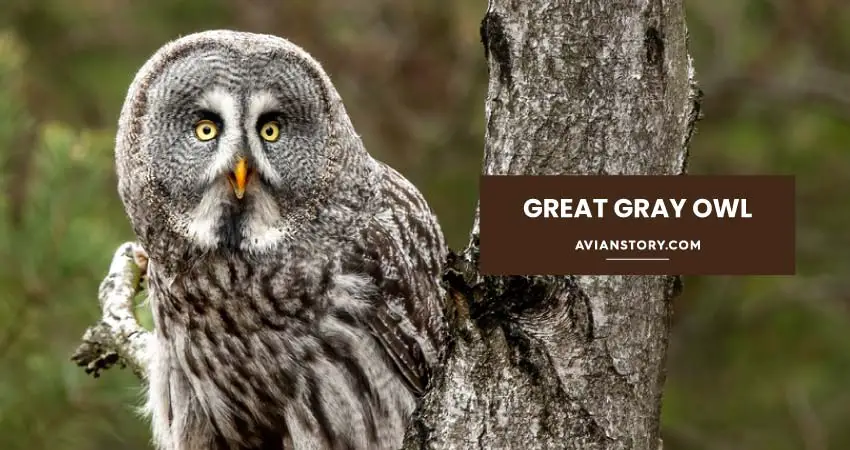
- Length: 24-33.1 inches
- Weight: 24.7-60 oz
- Wingspan: 53.9-60.2 inches
Commonly Found In
Great Gray Owls aren’t commonly found in Vermont. They mostly reside in the northwestern regions of Canada. In winter, they tend to migrate south and might be found in Vermont in those times.
Behavior or Characteristics
Great Gray Owls are the only species found in Vermont that are larger than Great Horned Owls. These owls don’t make any nests on their own. Rather, they occupy nests built by other large birds.
However, once they make a nest of their own, they tend to defend that nest with their life. In fact, they don’t hesitate to attack large predators such as black bears.
They’re easy to detect as they have a heavy-sounding call. However, they may call in a soft voice when they’re feeding their baby.
To support their massive body, these birds need to eat a lot every day. Fortunately, they can pray on larger animals due to their powerful body.
Despite their size, it’s tough to spot them as they can be disturbed easily and will fly off if they hear the slightest noise in the vicinity of their nests.
Fun Fact or Interesting Fact
- They’re the tallest owl species in the world
- These birds live off of rodents, mainly
Wrapping up
It’s relatively easy to spot owls in Vermont as they’re found in plentiful. In fact, sometimes, these birds will venture into urban areas. However, due to the presence of multiple species, it’s hard to identify which species you’re looking at.
When identifying owls, take their size, feather color, calling nature, and availability into consideration. This will help you deduce the species in front of you through a method of elimination.
Owls Found in Some Other States:
Resources:
- https://vtfishandwildlife.com/learn-more/vermont-critters/birds/barred-owl
- https://val.vtecostudies.org/projects/vermont-breeding-bird-atlas/owls/
- https://www.audubon.org/field-guide/bird/great-horned-owl
Feature Image Credit: RT Images, Shutterstock
